Abstract
The main feature of Chile’s vegetable production is the large amount of leafy vegetables produced, especially lettuce. In 2022, lettuce production will reach its highest level of 115kt, with cultivation particularly prevalent in warmer regions. Other major crops include tomatoes, pumpkins, peppers and onions, which have multiple uses (for processing, refrigeration and export). As for tomatoes, there is a particularly high demand for processing, with a large proportion produced for salsa and tomato sauce. In addition, Chile efficiently manages land use, and crops are selected that are suited to the climate and soil conditions. Lettuce, tomatoes, and other crops are mainly produced in the dry central region, and developments in irrigation technology have contributed to increased productivity. Overall, Chile continues to take advantage of its warm climate to provide high-quality vegetables for export markets, with demand particularly strong to North America and Europe.
Production (by vegetables)
Between 1961 and 2022, Chile’s vegetable production increased steadily, with especially notable growth in lettuce production. The lettuce production volume recorded in 2022, 115kt, was the highest ever, with lettuce production reaching 100% of its peak. This strengthens Chile’s position as a supplier of high-quality vegetables, primarily for the export market. Lettuce production is supported by a mild climate and efficient irrigation techniques, and is particularly prevalent in the arid central and northern regions of the country. Furthermore, from the 1960s to the 1980s, Chilean agriculture became more export-oriented and crop diversification progressed. Other vegetables such as tomatoes, pumpkins and onions are also produced, mainly for the domestic market or for processing. Since the 1990s, global warming and the introduction of new cultivation techniques have improved productivity, leading to an increase in high-yield crops, especially lettuce and tomatoes. Overall, Chilean vegetable production is shifting towards a production structure that takes full advantage of climatic conditions and is more conscious of export demand. Lettuce production is a symbolic example, and sustainable agriculture will continue to be required in the future while responding to technological innovation and changes in the market.
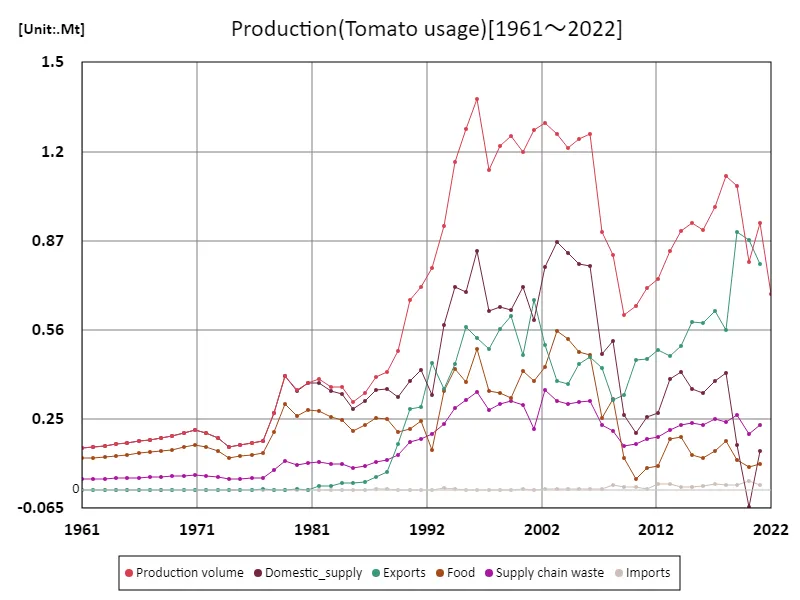

The maximum is 1.37Mt[1996] of Production volume, and the current value is about 50.1%
Yield(by vegetable)
Between 1961 and 2022, Chilean tomato production experienced significant growth. In 2022, tomato yield reached a record high of 73.8t/ha, achieving 100% production efficiency compared to its peak. This growth is mainly due to technological innovations, improved irrigation techniques and cultivation methods optimized for climatic conditions. Tomatoes are an important agricultural product in Chile, mainly for domestic consumption but also for export to foreign markets, especially North America and Europe. Between the 1960s and 1990s, Chilean tomato production shifted from primarily serving domestic demand to the export market. During this period, advances in tomato breeding and agricultural mechanization led to a dramatic increase in productivity. In particular, irrigation techniques that make efficient use of water resources in arid regions have contributed to improved productivity, making stable harvests possible. Tomato cultivation is concentrated mainly in the dry regions of central and northern Chile, where the warm and stable climate is ideal for growing tomatoes. In the future, as sustainable agricultural techniques and environmentally friendly cultivation methods are required, it is expected that Chilean tomato production will continue to evolve and remain competitive in the global market.
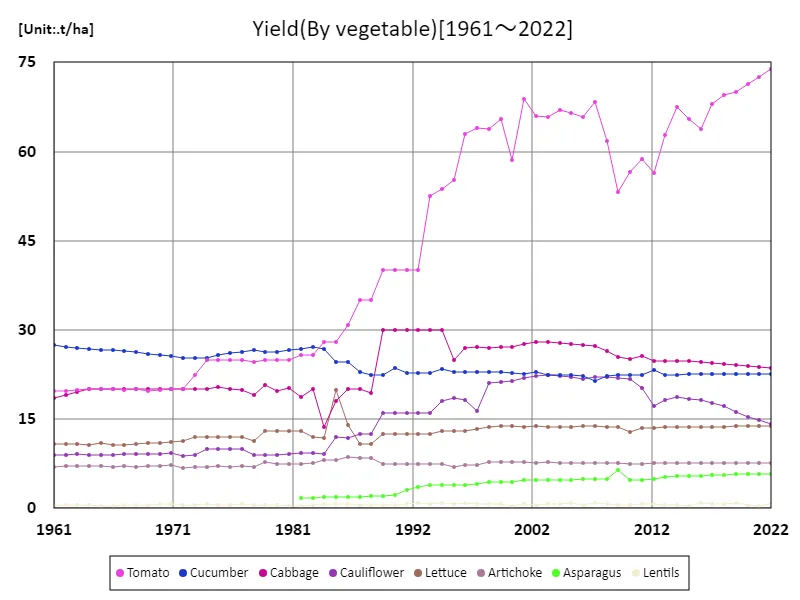

The maximum is the latest one, 73.8t/ha of Tomato
Land use (by vegetables)
In 2022, land use for vegetable production in Chile will be dominated by tomatoes, accounting for 9.3 kha, making them the largest producer of vegetables in the country. This reflects domestic and international demand, with tomatoes being Chile’s main export crop. The average land use area is 3.58kha, and the total land use area reaches 28.6kha. Land use of this scale indicates that Chilean agriculture has an efficient, large-scale production system, and appropriate management of water resources, especially in arid regions, contributes to improved productivity. Chilean agriculture is characterized by the cultivation of crops, particularly in warm, dry regions, where highly profitable crops such as tomatoes and lettuce are grown intensively. Advances in irrigation technology have made it possible to use limited water resources efficiently and maximize yields. The land use area for high-demand crops such as tomatoes tends to increase, and it is expected that land use for each crop will continue to be flexibly adjusted in response to fluctuations in demand and market needs. In addition, the intensification and efficiency of land use has contributed to increasing the competitiveness of Chilean agriculture, and is promoting the expansion of exports, particularly to international markets. In the future, it is expected that greater emphasis will be placed on sustainable agricultural methods, and land use optimization with consideration for the environment will progress.
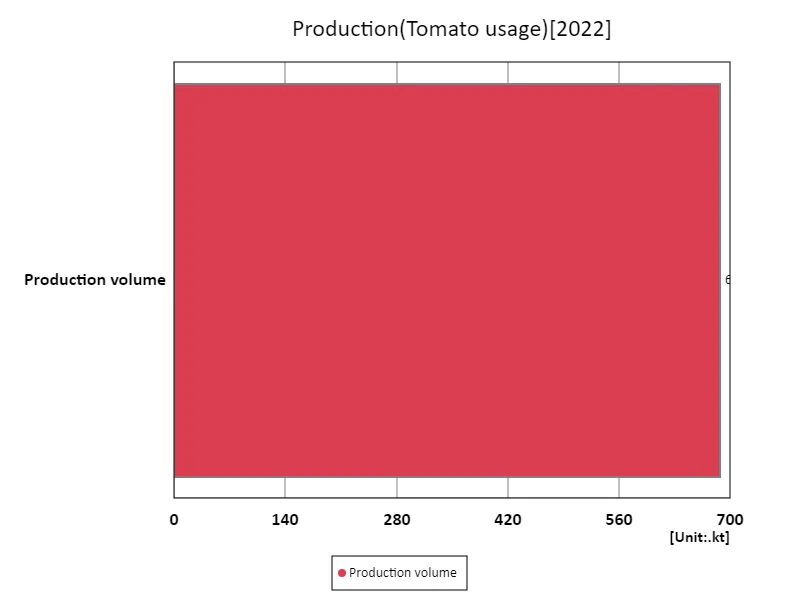

The maximum is 687kt of Production volume, the average is 687kt, and the total is 687kt
Tomato usage
Based on data dating back to 1961, Chile’s tomato production has increased rapidly, with production volumes reaching a record high of 1.37 Mt. From this period to the present, Chilean tomatoes have mainly been used for processing for export, and the production ratio for this purpose has increased. Tomatoes are supplied to markets, particularly in North America and Europe, as processed products such as salsa, puree, tomato sauce and canned goods, and the production of tomatoes for processing plays an important role. In the early 1960s, domestic consumption was the norm, but as export demand increased, the uses of tomatoes diversified. In addition, improvements in climatic conditions and irrigation techniques have increased production, making Chile an important supplier of tomatoes. Tomatoes, especially for processing, are of high quality and are key to remaining competitive in export markets. Furthermore, thanks to improvements in tomato varieties and advances in cultivation techniques, tomatoes are now being produced more efficiently and with higher yields, creating a system that can flexibly respond to the needs of different applications. Going forward, tomato production will continue to increase in response to demand in the export market, with production for processing in particular expected to continue to grow.
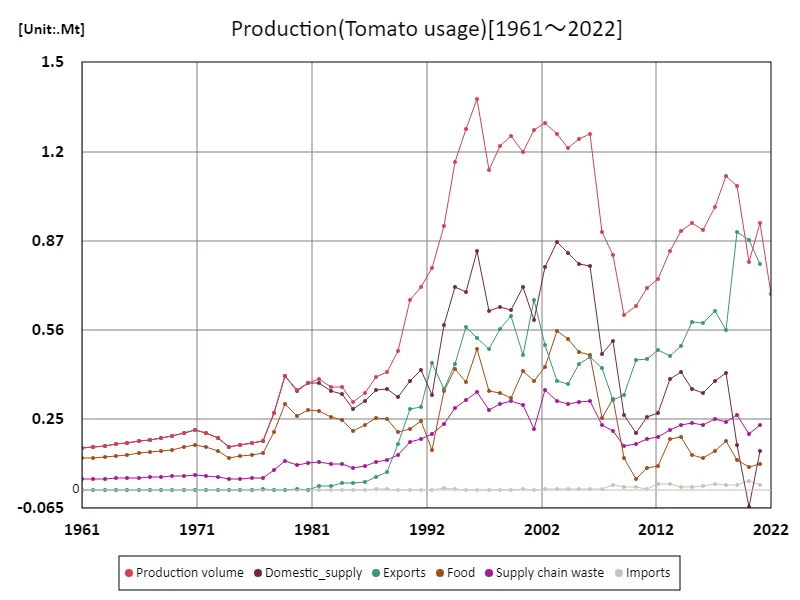

The maximum is 1.37Mt[1996] of Production volume, and the current value is about 50.1%
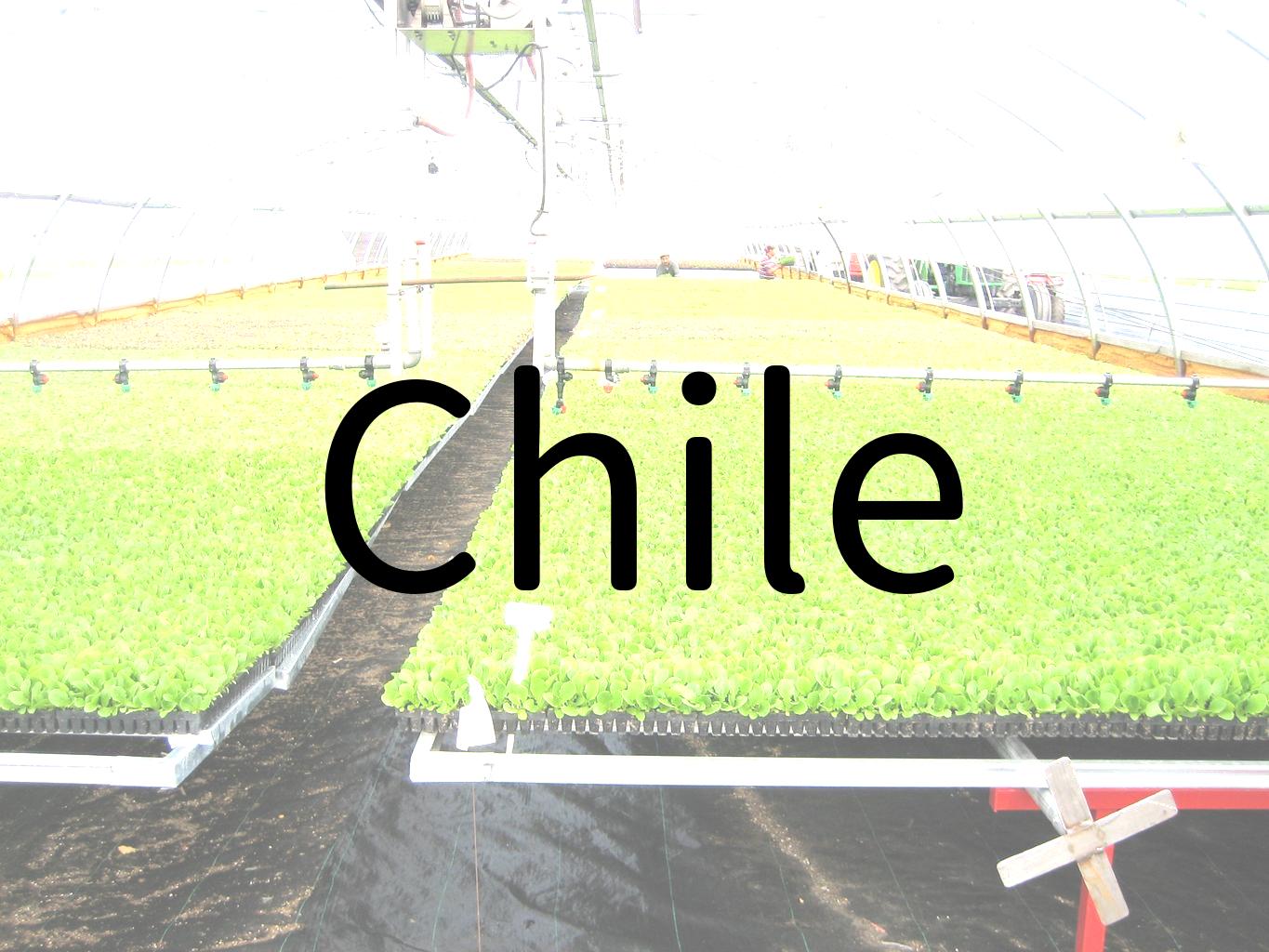


Comments